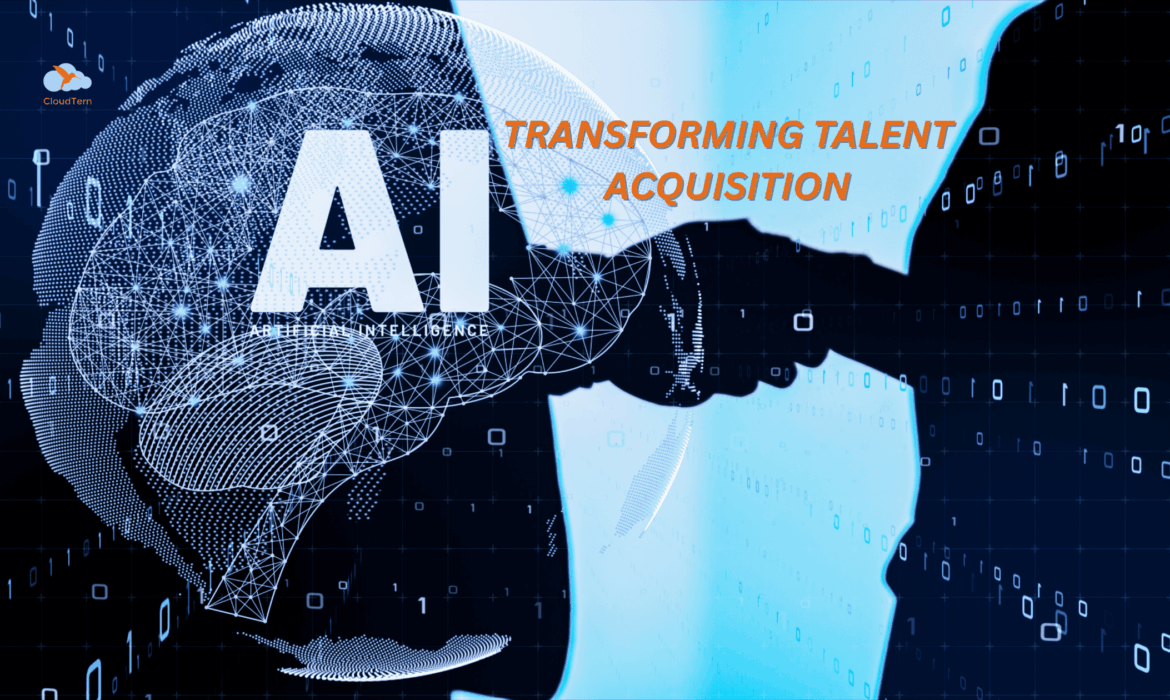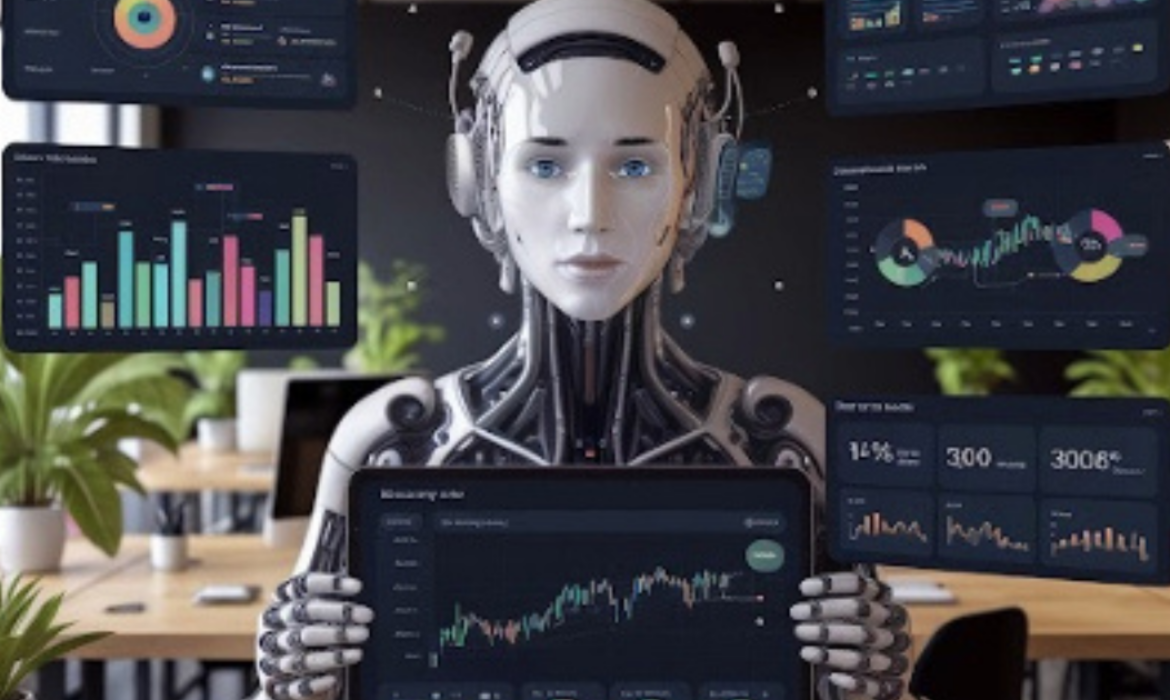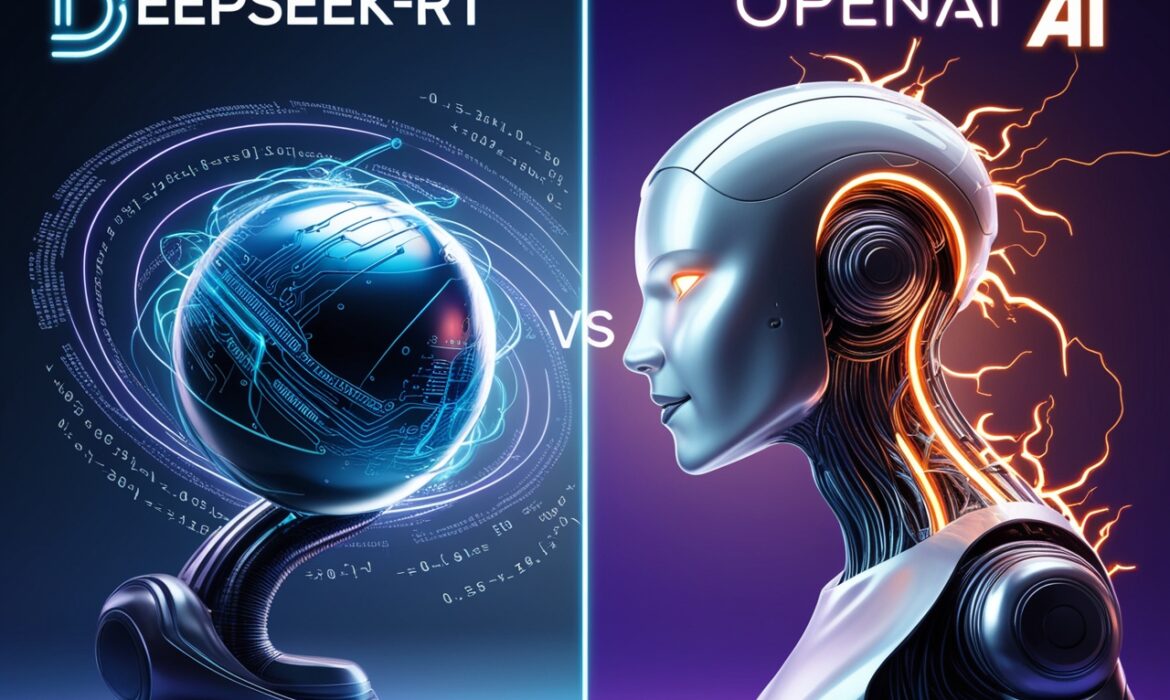Transforming Talent Acquisition with Gen AI: A Competitive Advantage for Modern Organizations
In today’s competitive job market, winning top talent means recruiting faster, smarter, and at scale. Traditional systems fall short in delivering personalized, data-driven hiring. Generative AI is revolutionizing talent acquisition by using advanced AI models, especially large language models, to generate, understand, and optimize recruitment processes.
Unlocking Efficiency: How AI Can Eliminate Workflow Bottlenecks in Supply Chain
From unexpected delays to inaccurate forecasts, bottlenecks in supply chain workflows often arise not from major breakdowns, but from small, unnoticed inefficiencies compounded over time. The result? Slower delivery cycles, rising costs, and missed opportunities.
Mastering AI in Supply Chains: A Guide to Successful Implementation
Artificial Intelligence has become a vital component of supply chain management, driving transformation. From predictive analytics to automated inventory optimization, AI is revolutionizing the way businesses forecast, plan, and deliver. But successful AI implementation isn’t a one-size-fits-all solution; it requires careful preparation and a strong operational focus.
Mastering Supply Chain Efficiency: The Strategic Edge of AI
Supply chain management has always been a complex operation, balancing multiple moving parts across procurement, manufacturing, logistics, and delivery. Traditionally, businesses have struggled with challenges like limited visibility across the supply chain, inaccurate demand forecasting, delayed responses to disruptions, rising operational costs, and inefficient manual processes.
Harnessing AI: A Strategic Advantage For Today’s Business Leaders
In today’s fast-paced digital economy, artificial intelligence is no longer a futuristic concept – it’s a present-day differentiator. Forward-thinking leaders are increasingly viewing AI not just as a tool, but as a strategic imperative that drives efficiency & innovation.
AI-Powered Workflow Automation For Healthcare Efficiency
In an era where healthcare organizations are expected to deliver faster, more personalized care with tighter budgets & fewer resources, operational efficiency is no longer a luxury; it’s a necessity.
Revolutionizing Logistics Through Workflow Automation Success
Understanding Workflow Automation in Logistics
Workflow automation is rapidly transforming logistics, promising smoother operations from warehouse to doorstep. Early efforts focused on automating inventory and order processing through basic software and manual data entry. Key advancements like barcode scanners, RFID tags, and warehouse management systems (WMS) then enabled real-time tracking and improved inventory control, setting the stage for more comprehensive strategies.
Today, artificial intelligence (AI), machine learning (ML), and robotic process automation (RPA) are propelling further change. AI analyzes data to predict demand and optimize routes, while ML continuously refines workflows. RPA handles repetitive tasks like data entry and invoicing. This tech-driven shift is enhancing efficiency, accuracy, and responsiveness, reshaping the logistics landscape, and paving the way for future innovations.
Key Benefits of Automation for Supply Chains
Improved Efficiency and Productivity
One of the primary advantages of automation in supply chains is the significant boost in efficiency and productivity. Utilizing automated systems such as robotic process automation (RPA) and AI-driven analytics, businesses can streamline their operations and reduce the time required to complete tasks. By alleviating operational bottlenecks, teams can shift their focus from mundane, repetitive tasks to more strategic decision-making processes.
Cost Savings and Resource Optimization
Automation offers considerable cost savings by minimizing the reliance on labor and enhancing resource utilization. It mitigates human errors and improves inventory management through precise forecasting, enabling companies to avoid costly mistakes and issues related to overstocking. This heightened efficiency not only contributes positively to the overall financial performance but also allows for reinvestment in further innovations.
Enhanced Accuracy and Customer Satisfaction
The implementation of automation within supply chain operations dramatically increases accuracy, leading to a substantial reduction in human error. Improvements in order fulfillment and inventory tracking directly boost customer satisfaction, as orders are processed more accurately and delivered on time. Additionally, real-time updates on inventory levels and order statuses further enhance the customer experience.
Scalability and Adaptability
Automation equips businesses with vital scalability and adaptability in an ever-changing market. Automated systems can rapidly adjust to shifting demands, allowing businesses to remain agile without placing excessive strain on resources. This level of flexibility not only supports ongoing competitiveness but also promotes sustainable practices by optimizing resource utilization throughout the entire supply chain lifecycle.
Technologies Driving Workflow Automation Forward
Workflow automation is significantly propelled by several key technologies that enhance operational efficiency and streamline processes. One pivotal technology is Robotic Process Automation (RPA), which automates repetitive tasks, allowing employees to focus on more strategic activities. By integrating RPA with Artificial Intelligence (AI) and Machine Learning (ML), organizations can achieve hyper-automation, where complex, end-to-end processes are automated, driving higher productivity and adaptability to business needs. Cloud-based platforms also play a crucial role by providing accessible, scalable, and flexible solutions that allow businesses to implement automation without extensive infrastructure investments.
Additionally, advancements in integration technologies, such as Application Programming Interfaces (APIs) and low-code/no-code development platforms, facilitate seamless connectivity between various software applications and systems. This integration enables data flow across departments, enhancing collaboration and decision-making. Essential tools like AI-driven analytics further enable businesses to gain insights from operational data, optimizing workflows and improving overall process accuracy. Collectively, these technologies not only drive automation forward but also empower organizations to be more agile and responsive in today’s rapidly evolving market.
Challenges & Best Practices in Automated Workflow Adoption
Adopting automated workflow solutions comes with significant benefits, such as improved efficiency, reduced manual errors, and streamlined operations. However, organizations often face challenges, including resistance to change, integration complexities with existing systems, and high initial implementation costs. Additionally, ensuring data security, maintaining regulatory compliance, and training employees to adapt to new automated processes can be daunting. Without proper planning, businesses may struggle with workflow disruptions and limited scalability.
To successfully implement automation, organizations should follow best practices such as conducting a thorough assessment of existing workflows, selecting the right automation tools, and ensuring seamless integration with current systems. Prioritizing employee training and change management can help ease the transition and encourage adoption. Additionally, businesses should continuously monitor and optimize automated workflows to enhance performance and address evolving needs. By taking a strategic approach, companies can maximize the benefits of workflow automation while minimizing potential roadblocks.
Future Trends: The Next Phase of Workflow Automation in Logistics
The future of workflow automation in logistics is being influenced by several key trends. Artificial Intelligence (AI) and Machine Learning are significantly improving decision-making and demand forecasting, which results in enhanced operational efficiencies. The emergence of robotics and autonomous systems, including drones and automated guided vehicles (AGVs), is transforming warehouse operations and last-mile delivery, effectively addressing labor shortages and expediting processes.
In addition, the Internet of Things (IoT) enhances connectivity by offering real-time data on inventory levels and shipment statuses, allowing for proactive adjustments that boost efficiency. Cloud-based solutions are reshaping logistics management, enabling smooth collaboration, and providing real-time updates across all stakeholders involved. There is also an increasing emphasis on sustainability, with companies utilizing automation to optimize delivery routes and adopt environmentally friendly practices. Finally, blockchain technology is becoming more prevalent as it enhances transparency and security within logistics, offering a decentralized ledger that tracks shipments and verifies transactions, thereby reducing fraud and fostering trust among partners.
Navigating Workflow Automation in the Insurance Landscape
Efficiency is crucial in today’s fast-paced industries, and this principle holds special significance in the insurance sector. As organizations face mounting pressure to enhance their operational effectiveness, workflow automation is taking center stage. By transforming complex processes into seamless operations, automation reduces the likelihood of manual errors and optimizes workflows. This shift allows insurance professionals to redirect their focus from tedious administrative tasks to what truly matters—delivering exceptional client service. As competition grows fiercer and customer expectations evolve, integrating these technologies becomes not just an option but a necessity for survival and growth.
Moreover, the adoption of workflow automation enables insurance companies to maintain agility in an ever-changing market. With streamlined processes, organizations can respond more quickly to client inquiries, adapt to regulatory changes, and implement new products and services with ease. This not only enhances internal productivity but also leads to higher levels of customer satisfaction. As insurers navigate this transformation, embracing automation will be key to staying competitive, meeting the demands of modern consumers, and thriving in an increasingly complex industry landscape.
Understanding Workflow Automation: Key Concepts for Insurance Professionals
Workflow automation involves using technology to streamline and enhance business processes, enabling tasks to be completed with minimal human intervention. In the insurance sector, this can encompass critical functions like policy management, claims processing, and customer engagement. By transitioning to digital workflows, insurance companies can significantly boost their operational efficiency, reduce errors, and enhance service quality. For professionals looking to remain competitive in this ever-evolving landscape, a strong understanding of these fundamental concepts is essential. As data analytics increasingly impacts insurance operations, grasping automation allows professionals to leverage technology effectively, leading to notable improvements in service delivery.
Benefits of Workflow Automation in Insurance Operations
Workflow automation offers a wide array of benefits for insurance operations. By automating repetitive tasks, companies can significantly improve efficiency and shorten processing times—both critical in today’s competitive environment. Automation minimizes errors, resulting in increased accuracy for policy management and claims processing, which are vital for boosting customer satisfaction. Clients value quick responses and reliable information, making automated workflows a strategic advantage for employees and beneficial for customers seeking timely resolutions. Recognizing and embracing these benefits is crucial for any innovative insurance provider striving for growth.
Common Challenges in Implementing Automation and How to Overcome Them
While implementing workflow automation can yield substantial benefits, it also presents unique challenges. Employees may resist changes due to fears of job loss or because they struggle to adapt to new technologies. Moreover, integrating automation into existing workflows—especially in areas like policy and claims management—can be complex and require significant upfront investment. These barriers can be overcome through comprehensive training and involving employees in the automation process. Providing robust support and clearly communicating the advantages of automation, combined with a gradual implementation strategy, can foster a culture of innovation and facilitate a smoother transition for all.
Essential Tools and Technologies for Effective Workflow Automation
Successful automation in the insurance industry relies on utilizing the right tools and technologies. Solutions such as robotic process automation (RPA), business process management (BPM) software, and customer relationship management (CRM) systems are crucial for streamlining processes from policy management to claims handling. Data analytics also plays a transformative role, helping insurers uncover trends and enhance operational efficiency. These technologies ensure smooth information flow and bolster data management capabilities. By investing in user-friendly and scalable automation tools, organizations can remain agile and responsive to changing market demands.
Best Practices for Integrating Automation into Insurance Processes
To successfully integrate automation into insurance processes, thoughtful planning and execution are vital. Start by identifying the specific workflows—such as claims processing and customer engagement—that will benefit most from automation. Involve key stakeholders in the planning phase to gather insights that can enhance buy-in and standardize support efforts. Implementing automation in stages allows companies to adjust to changes more comfortably. Regularly reviewing and refining automated processes is crucial for maintaining efficiency and empowering customers. By following these best practices, insurance companies can fully realize the benefits of automation initiatives and improve service delivery.
Future Trends: The Evolving Role of Automation in the Insurance Industry
As technology continues to advance, the role of automation in the insurance industry is set to expand significantly. Innovations like artificial intelligence (AI) and machine learning are becoming key components of automated workflows, enabling advanced data analytics for predictive insights and personalized customer interactions. Growing regulatory compliance requirements are driving the need for sophisticated automation tools to ensure adherence to industry standards. Insurers who stay ahead of these emerging trends and invest in the necessary technologies will enhance their operations and secure a competitive advantage in a rapidly changing market, ultimately leading to greater customer engagement and empowerment.
Automating Customer Service: The Role of AI in Modern Contact Center
Imagine a world where customer service inquiries are resolved instantly and available 24/7, eliminating the frustration of waiting on hold. As customer expectations grow in today’s fast-paced digital landscape, organizations are increasingly looking for innovative solutions to enhance efficiency and satisfaction. Automating customer service has emerged as a key strategy in this evolution, with artificial intelligence (AI) at the forefront of modern contact centers.
AI technologies, including chatbots, natural language processing, and predictive analytics, empower businesses to streamline their operations, reduce response times, and deliver personalized experiences. By adopting these AI-driven solutions, companies are transforming the way they interact with customers and setting new standards for service excellence. This shift not only drives greater customer loyalty but also enhances overall operational effectiveness, ensuring that businesses remain competitive in an ever-changing market.
The Evolution of Contact Centers: From Manual to AI-Driven Operations
The transformation of contact centers has shifted from traditional manual processes to sophisticated AI-driven systems. In the past, human agents handled customer inquiries over the phone, often resulting in long wait times and inconsistent service due to high call volumes. While automatic call distribution and interactive voice response (IVR) technologies improved efficiency, they still relied heavily on human involvement, demonstrating the need for greater automation in customer service.
Currently, AI technologies have revolutionized contact centers by significantly enhancing customer experience and operational efficiency. By utilizing natural language processing, predictive analytics, and machine learning, contact centers can automate routine inquiries and provide personalized assistance around the clock through AI chatbots and virtual assistants. This shift allows human agents to focus on more complex issues, streamlining processes and improving response times, ultimately leading to higher customer satisfaction. As AI continues to evolve, contact centers are set to further enhance their capabilities, helping organizations succeed in a competitive environment.
Key AI Technologies Powering Modern Contact Centers
Modern contact centers are transforming customer service with AI-driven technologies. Natural Language Processing (NLP) empowers chatbots and virtual assistants to understand and engage in human-like conversations. These intelligent tools efficiently handle inquiries, provide instant information, and complete transactions without human intervention. By reducing wait times and automating routine tasks, AI enhances speed and accuracy in customer support. Voice and text interactions feel seamless, ensuring a smooth and engaging experience. As a result, businesses can deliver faster, more responsive service while optimizing resources.
Predictive analytics takes customer interactions to the next level by forecasting needs before they arise. By analyzing past data, AI helps agents proactively address issues like billing concerns or service disruptions. This foresight enables personalized interactions that improve customer satisfaction and loyalty. Real-time speech recognition and sentiment analysis further enhance quality assurance and agent performance. These AI capabilities refine training, ensuring teams are better equipped to handle complex requests. As AI evolves, it continues to revolutionize contact centers, making them more agile, intelligent, and customer-focused.
The Advantages of AI in Contact Centers: Cost Savings and Scalability
AI adoption in contact centers boosts cost efficiency and scalability by automating tasks like customer inquiries, transactions, and scheduling. This reduces workforce needs, cutting operational costs while optimizing workflow through intelligent call routing.
AI also enables seamless scaling to match fluctuating demand. During peak periods, AI chatbots efficiently manage surges, ensuring fast response times and consistent service quality. This adaptability enhances customer satisfaction and loyalty while helping businesses stay competitive, improve productivity, and respond swiftly to market changes.
Boosting Agent Productivity and Reducing Workload with AI
AI is revolutionizing workplace productivity by automating routine tasks like data entry, customer inquiries, and report generation. This allows agents to focus on complex issues requiring critical thinking and creativity, improving efficiency and service quality. AI chatbots handle basic queries, freeing up agents for more meaningful work that adds value to their organizations.
Additionally, AI-driven analytics provide real-time insights, helping agents make informed decisions and personalize customer interactions. By streamlining workloads and enhancing outcomes, AI empowers employees to maximize their skills while reducing repetitive tasks. As AI advances, it continues to create a more efficient, dynamic, and responsive workplace.
The Future of AI in Contact Centers: Trends and Innovations
AI is poised to transform contact centers by introducing chatbots and voice assistants that facilitate immediate automated responses. This enhances user experiences while allowing human agents to concentrate on complex issues, providing a more seamless service.
Moreover, AI advancements will improve operational efficiency in contact centers, optimizing processes and promoting better resource management and cost savings. Continuous innovations in AI technology will keep contact centers adaptable to customer needs, enabling businesses to enhance service capabilities and maintain a competitive edge in a fast-paced market.
DeepSeek-R1 Vs OpenAI: A Clash of Specialized and Versatile AI Models
The emergence of Deepseek, particularly its advanced reasoning model Deepseek R1, has sparked considerable debate within the tech community as it rapidly ascends to become a top-rated free app on the US Apple App Store. Renowned for its innovative application of large-scale reinforcement learning, Deepseek distinguishes itself from traditional AI leaders like OpenAI by delivering impressive results with a more efficient and cost-effective approach. While OpenAI reportedly poured over $100 million into developing its GPT-4 model, Deepseek claims to have achieved comparable breakthroughs in just two months for only $6 million. This stark contrast highlights a significant shift in the AI landscape towards open-source models that are increasingly capable of rivaling proprietary systems.
As Deepseek gains momentum, it is prompting a re-evaluation of established AI development strategies, emphasizing the potential for transformative outcomes through efficient resource utilization and innovative methodologies. The rise of open-source innovation is intensifying the competition with proprietary frameworks, ultimately reshaping the future of artificial intelligence and redefining the trajectory of technological advancement. The ongoing battle between these two approaches suggests a dynamic shift in how AI technologies may be developed and deployed in the coming years.
Why is DeepSeek a Game Changer?
DeepSeek’s emergence in the AI landscape coincides with a critical juncture amid the ongoing tech cold war between the U.S. and China. U.S. export controls on advanced technologies, particularly Nvidia chips, have severely restricted China’s access to cutting-edge AI hardware. Consequently, many Chinese companies have shifted their focus to developing downstream applications, relying on existing models rather than investing in foundational AI systems. This pivot has fostered dependency on Western technologies and created an innovation gap.
With DeepSeek’s rise, there is potential for a significant shift in this dynamic. The startup has demonstrated that substantial AI advancements can be achieved with far less investment than that of proprietary models like OpenAI’s GPT-4. By leveraging large-scale reinforcement learning and efficient resource management, DeepSeek challenges the belief that success in AI development is solely dependent on access to advanced hardware and vast financial resources. This approach not only opens the door for other players in constrained environments but also encourages a rethinking of global AI strategies, promoting open-source methodologies and community-driven initiatives over proprietary technology.
Cost Efficiency: The Economic Advantage of DeepSeek-R1
DeepSeek’s emergence in the AI landscape coincides with a critical juncture amid the ongoing tech cold war between the U.S. and China. U.S. export controls on advanced technologies, particularly Nvidia chips, have severely restricted China’s access to cutting-edge AI hardware. Consequently, many Chinese companies have shifted their focus to developing downstream applications, relying on existing models rather than investing in foundational AI systems. This pivot has fostered dependency on Western technologies and created a gap in innovation.
With DeepSeek’s rise, there is potential for a significant shift in this dynamic. The startup has demonstrated that substantial AI advancements can be achieved with far less investment than that of proprietary models like OpenAI’s GPT-4. By leveraging large-scale reinforcement learning and efficient resource management, DeepSeek challenges the belief that success in AI development is solely dependent on access to advanced hardware and vast financial resources. This approach not only opens the door for other players in constrained environments but also encourages a rethinking of global AI strategies, promoting open-source methodologies and community-driven initiatives over proprietary technology.
OpenAI’s Multifunctional AI Development Strategy
OpenAI’s strategy for AI development focuses on creating versatile, multifunctional models such as GPT-4, capable of addressing a broad spectrum of tasks, including natural language processing and problem-solving in various fields. However, this level of flexibility comes with a significant price tag. OpenAI has reportedly invested over $100 million in the development of GPT-4, a substantial expenditure aimed at ensuring the model performs well across diverse applications. Yet, these high costs can pose barriers to accessibility for smaller competitors.
Despite the cutting-edge nature of OpenAI’s models, their resource-intensive requirements have ignited discussions regarding sustainability and efficiency. As the demand for specialized and cost-effective AI solutions rises, OpenAI’s focus on multifunctionality may encounter competition from more streamlined and affordable alternatives, such as DeepSeek.
Performance Comparison: A Comparative Analysis
Mathematical Reasoning and Coding Tasks
DeepSeek-R1 has shown superior performance in mathematical reasoning and coding tasks, achieving a notable 79.8% accuracy on the AIME 2024 benchmark, slightly outperforming OpenAI’s models which achieved 79.2%.
Versatility and General-Purpose Capabilities
OpenAI’s models, like GPT-4, are celebrated for their versatility and proficiency across a wide array of tasks. They excel in natural language understanding, translation, and creative writing.
Multitask Language Understanding
In the Massive Multitask Language Understanding (MMLU) benchmark, OpenAI’s models have demonstrated higher accuracy rates than DeepSeek-R1, highlighting their extensive knowledge base and competence in diverse subjects.
Future Trends: What Lies Ahead for AI Models
The future of AI models is set for a transformative shift, driven by key trends shaping the industry. Multimodal AI, which integrates text, images, audio, and video, is emerging as a game-changer, enabling more natural interactions and improving accuracy. This evolution toward versatile AI systems will redefine their role in daily life and business operations, making them more adaptive and impactful.
In parallel, cost efficiency and open-source development are expected to democratize AI access, reducing dependency on expensive proprietary systems. Smaller, energy-efficient models will gain traction, fostering sustainability and broader adoption. Additionally, as market fluctuations influence the U.S. dollar’s value, innovation from diverse players will accelerate, reshaping competitive dynamics within the AI landscape.












